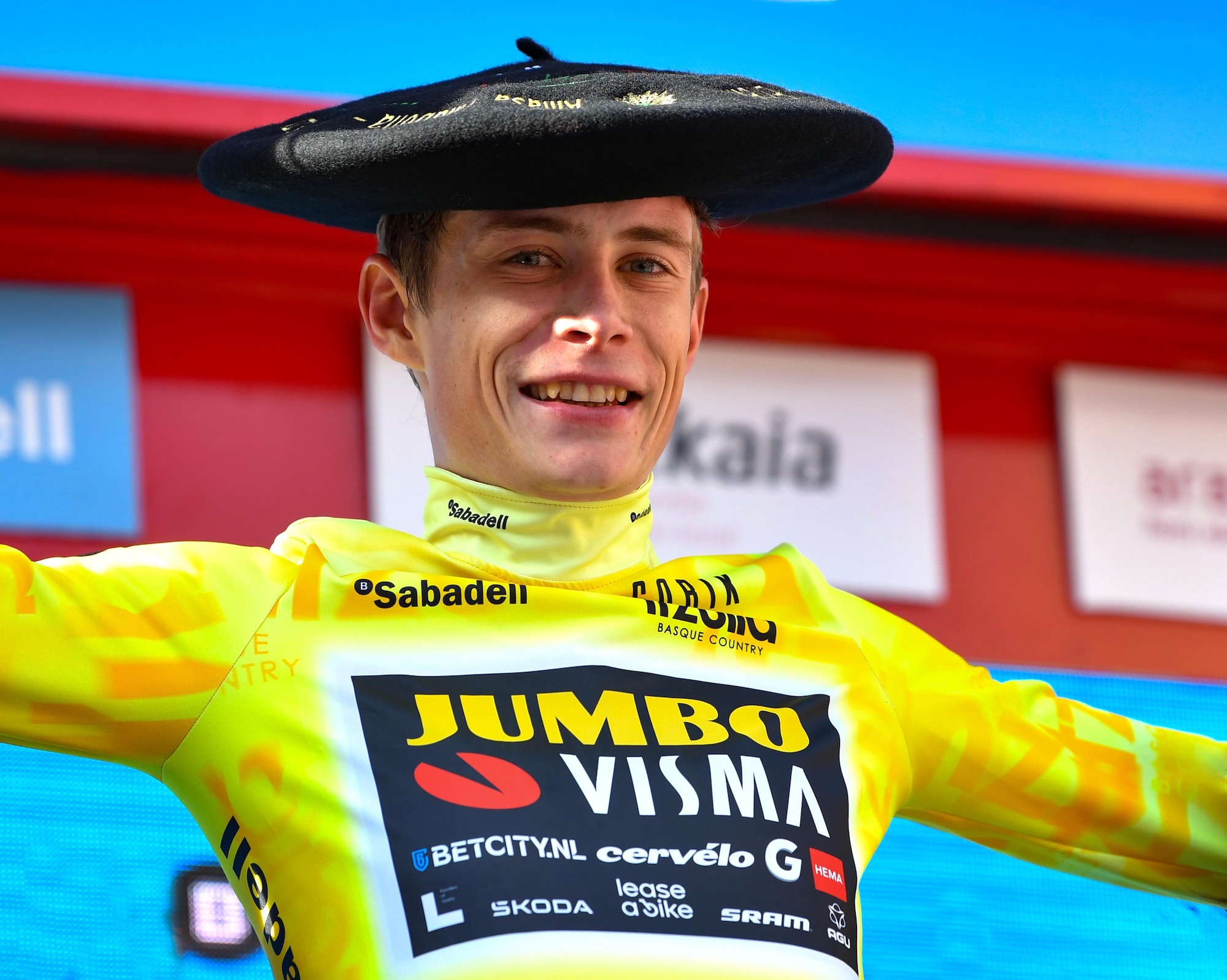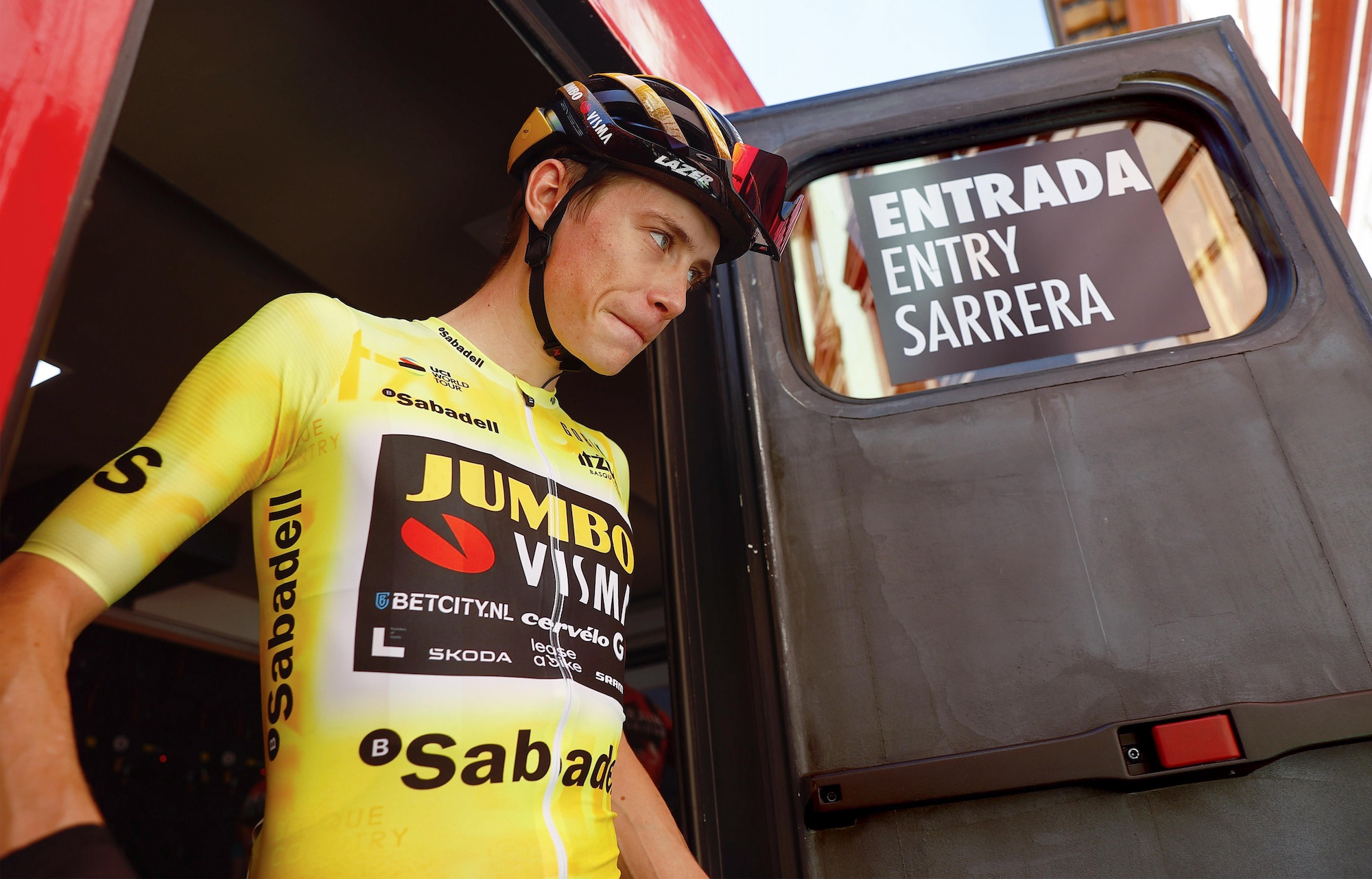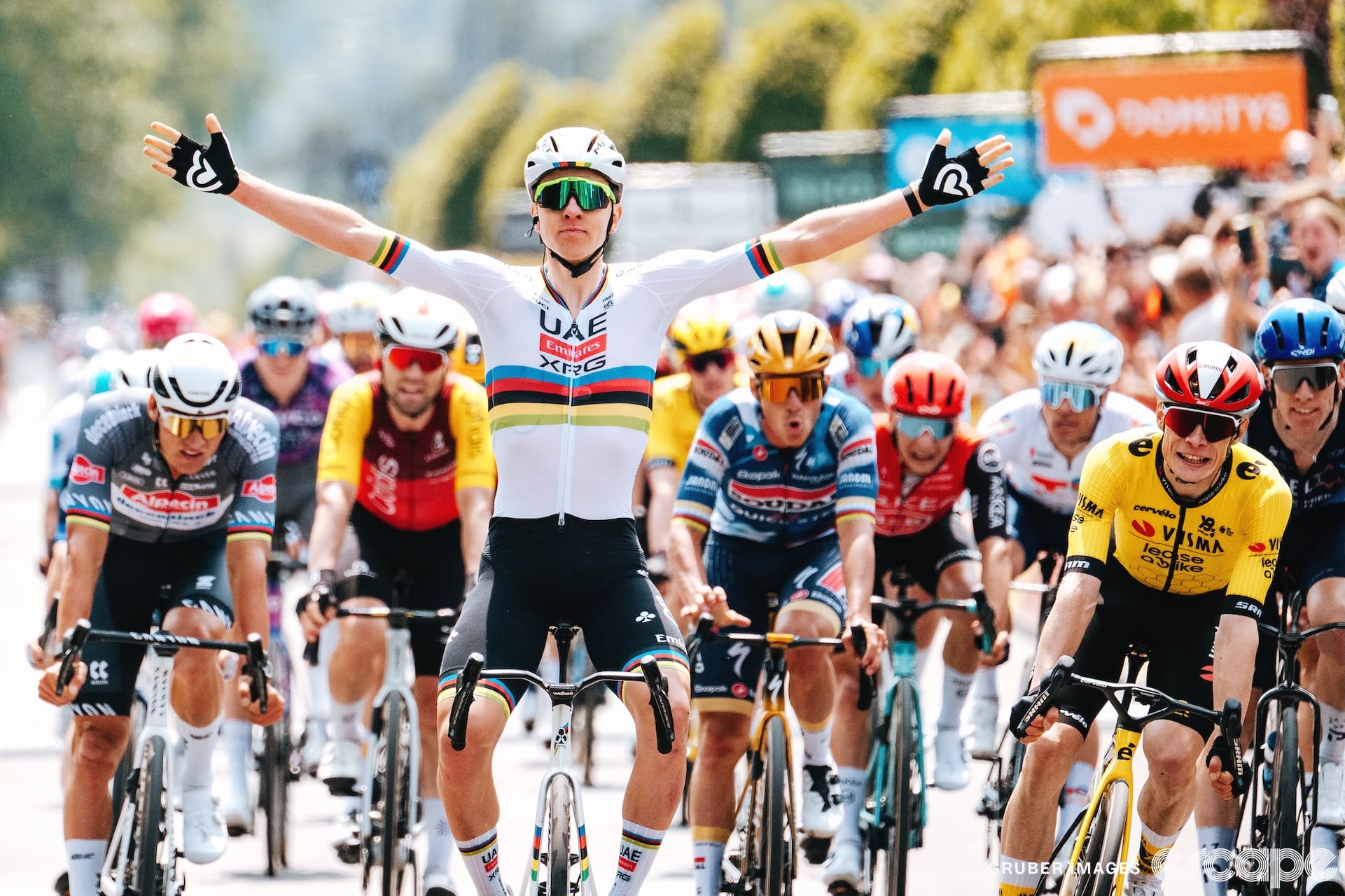Jonas Vingegaard is the latest star rider to sign a long contract extension, penning a new deal to keep him with Jumbo-Visma until at least the end of the 2027 season.
The Danish Tour de France champion says the long-term agreement gives him "peace of mind" (and, you'd imagine, a boatload more money than his previous contract) to focus on what he's actually paid to do: race bikes.
He becomes the fifth rider to sign a deal until the end of 2027; only UAE Team Emirates' Juan Ayuso has a longer contract (end of 2028).
While 1- to 3-year terms are still the norm in the sport, the past few years have seen an increase in the number of long-term contracts. What's interesting is that these include not only the expected stars like Vingegaard, Remco Evenepoel, and Tadej Pogačar, but also a number of less-familiar names. Jumbo in particular has made a practice of locking up promising young riders who are still in the development ranks to long-term deals. Here are the longest contracts in the sport right now:
2025: Mathieu van der Poel (Alpecin-Deceuninck), Primož Roglič (Jumbo-Visma)
2026: Egan Bernal, Ben Turner (both Ineos Grenadiers), Biniam Girmay (Intermarché-Circus-Wanty), Per Strand Hagenes, Johannes Staune-Mittet, Wout van Aert, Loe van Belle (all Jumbo-Visma), Remco Evenepoel (Soudal Quick-Step), Bauke Mollema (Trek-Segafredo), João Almeida, Juan Sebastián Molano (both UAE Team Emirates)
2027: Oscar Onley (DSM), Filippo Ganna, Tom Pidcock (both Ineos Grenadiers),
Jørgen Nordhagen, Jonas Vingegaard (both Jumbo-Visma), Tadej Pogačar (UAE Team Emirates)
2028: Juan Ayuso (UAE Team Emirates)

That list shows a clear strategy: teams are giving these long deals out to either top, proven talents or the riders they bet will be the next generation of stars bursting through over the next couple of seasons. A long deal allows these athletes both the time to develop without worrying about paycheques and also prevents other teams swooping in and snatching them at the first public display of their powers.
To get a better idea of how and why these contracts are becoming more prevalent, we spoke to Jamie Barlow, an agent with 258 Protégé Sports Management, who represent a host of riders including Ethan Hayter and Sarah Gigante.
"I believe it works for one rider in each team," Barlow tells Escape Collective. "I don't believe it works for 99% of riders. If you look at the top guys, from a team perspective obviously these guys are allocated [a] big portion of budget. I would say 10/15% of the budget goes on these riders alone. Obviously teams want to lock them in for as long as possible. Sponsors want to lock them in for as long as possible. But for the 99% a lot can change."
For example, over the course of a few years the ambitions of a team can change (as with Soudal's transformation from Classics powerhouse to Grand Tours team) and pivotal staff members can leave and arrive, changing a rider's standing and place in the pecking order within a team. Of course, a couple additional years on a contract provides greater job security, but when careers are short these could be a couple of years you can't afford to lose.
And while one long-term star rider contract per team doesn't appear to be a hard and fast rule for the super teams with much bigger budgets (UAE Team Emirates, Jumbo-Visma and Ineos Grenadiers), there are three caveats. The first is that the size of their budgets means multiple star riders can be paid for (and some may not account for as much as 10% of the budget either given the war chests these teams have at their disposal).
The second is that there is often a clear pecking order. At UAE Team Emirates, neither João Almeida or Juan Ayuso can expect to be given deferential treatment over Tadej Pogačar, while at Jumbo-Visma, Jonas Vingegaard has clearly emerged as the team's de facto GC leader after doing what Primož Roglič hasn't been able to – namely win the Tour de France. Finally, in the case of the Ineos Grenadiers, headline riders aren't competing for the same prizes. Filippo Ganna is focused on time trialling, Hour Records and Classics like Paris-Roubaix; Egan Bernal (pre-crash) was the team's present day Grand Tour contender; while Tom Pidcock can do a lot of things very well, and is yet to push himself in the territory of focusing on the overall classifications of three-week stage races. For Jumbo-Visma, Wout van Aert can win everything that Jonas Vingegaard cannot.
Meanwhile, Mathieu van der Poel and Biniam Girmay better fit the mould described by Barlow of star riders soaking up the budget and ambition of their squads.
So, for those top guys, does the impetus for these long deals come from them or their teams? It's a little of both. Barlow says that top riders all likely have various win bonus arrangements in their contracts, which means there isn't as much need for them to be shopping around every couple of years to cash in on their big victories. For teams, the security of the long contracts allows them to properly plan out their budgets and objectives as a squad.
"I think part of it depends on the rider, all of these guys will have win bonuses, it depends on the individual," Barlow explains. "It’s job security for the rider but more-so for the teams. They can plan around their budgets and sponsor activations. The teams can build around a Tadej [Pogačar]. If you look at Soudal Quick-Step, they are clearly building around Remco and going GC-focused, so that’s a big strategy that takes a couple of years and you see them signing more climbers and more GC riders."
Imagine Patrick Lefevere's fury if he went out and signed a bunch of climbing domestiques while only having Evenepoel on a two-year deal, who then promptly left for another team? I don't think there would be enough pages in Het Nieuwsblad to contain his rage.
Jumbo-Visma boss Richard Plugge says as much in the press release announcing Vingegaard's extension: "Jonas is a fantastic fit for us: he is eager to learn and easy to coach, and also pushes us ahead as a team. He was a rough diamond when he first came to the team. Together, we developed significantly, ultimately winning the Tour de France. Jonas is essential to our goals if we're to maintain our position at the top.”
Barlow also predicts these lengthy contracts will soon arrive in the women's peloton.
"I think we’ll start to see it on the women's side soon. In the past the sponsors weren't locked in long-term but I think the teams will start to lock in their top riders, you will see more three- or four-year contracts, they will follow.
"I think there will be a generation change when Annemiek van Vleuten, Marianne Vos and Lizzie Deignan retire and you have a new generation of riders that come behind them and you will have teams trying to secure their top riders."
Did we do a good job with this story?




